We kindly inform you that, as long as the subject affiliation of our 300.000+ articles is in progress, you might get unsufficient or no results on your third level or second level search. In this case, please broaden your search criteria.
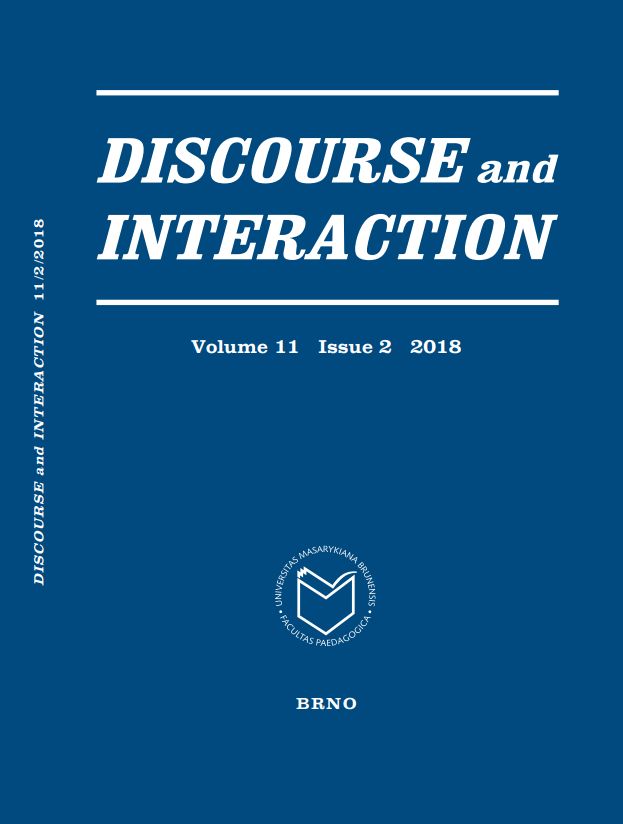
The present review deals with the following publications: Bednárová-Gibová, K. (2014) The English Language through the Prism of the Centuries. Prešov: Filozofická fakulta Prešovskej univerzity. 94 pp. Bednárová-Gibová, K. (2018) Selected Chapters in English Lexicology. Part I: Lexical Semantics and Lexicography. Prešov: Vydavateľstvo Prešovskej univerzity. 113 pp.
More...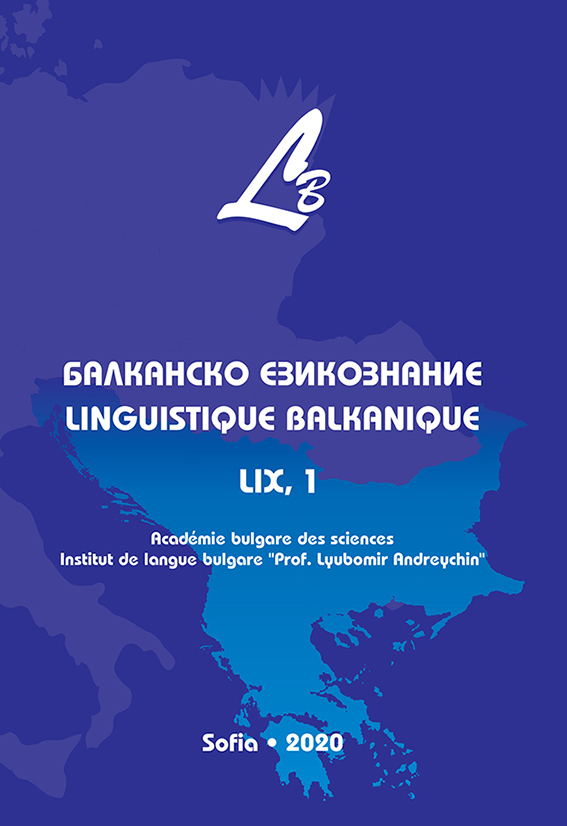
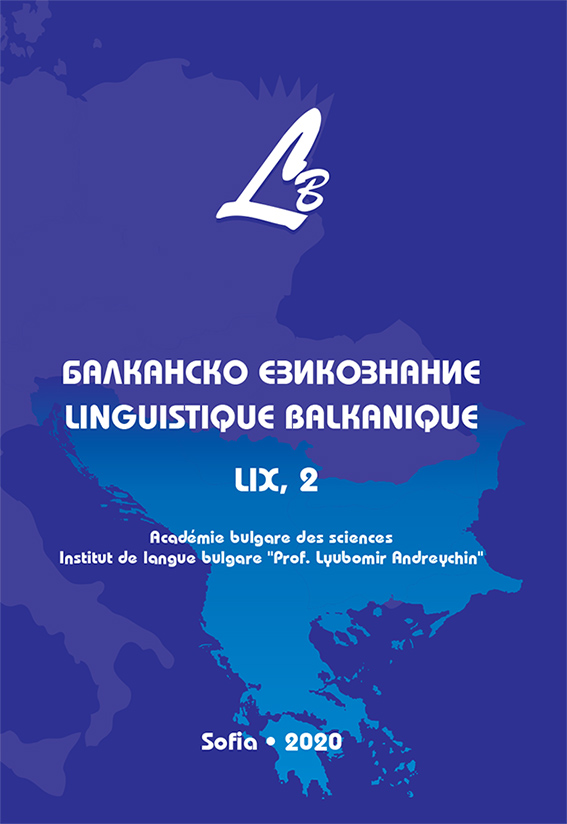
The Moscow school of Balkan linguistics originated in the Institute of Slavic Studies (Russian Academy of Sciences) in the 1960s. It brought together a number of researchers who combined their interest in Balkan synchrony with their deep expertise in diachrony as well as broad competence in linguistics, semiotics, literature, folklore, and ethnology. These researchers’ contributions have been published in periodicals established by the Institute, including “Slavic and Balkan Folklore” (Slavyanskiy i balkanskiy fol’klor), “Slavic and Balkan Linguistics” (Slavyanskoe i balkanskoe jazykoznanie), “Series Balcanica” (Balkanskie chteniya), “Centre of Linguocultural Research “Balcanica”. Proceedings of Round Tables” (Materialy kruglogo stola CLI “Balcanica”), as well as in a number of monographs and collected volumes. Since 2008, the main unit within the Institute organizing the events and publications in the field of Balkan linguistics is the Centre of Linguocultural Research “Balcanica”. The central concept of the school is the so-called “mediate language” (“jazyk-posrednik”), an abstract system of symbols that 1) facilitates the most efficient description of any given Balkan language within the framework of all other Balkan languages and 2) provides a set of cost-effective algorithms to transform sentences (or texts) of a Balkan language into any other Balkan language. In the first part of this study the authors analyze the main publications and conferences within the framework of the Moscow school of Balkan linguistics during the last 60 years, focusing mostly on the problems of grammar typology and highlighting the current trends in the field. We specifically dwell upon contributions in the field of verbal and nominal systems of the Balkan languages, functional words, and lexicon, as well as outline the current trends that define the development of Balkan studies in the first twenty years of the 21st century.
More...


As a result of the analysis of liturgical texts of the 14th–15th centuries created in the territory of Ukraine, expressive signs of interaction between the Old Bulgarian graphic and spelling system and the Ukrainian folk speech are recorded. Manifestations of the phonetic and graphic South Slavic-Ukrainian variability are associated with the following linguistic phenomena in the vocalism and consonantism of religious monuments: continuity of the former*ę,*’а and *Q; change of the initial *jе into о; transition of e into o after hushings and ц; reduction of и > ь before iotated vowels; confusion of unstressed и and е; development of sound combinations *tоrt, *tоlt, *tеrt, *tеlt; reflexes of sound combinations ър, ъл, ьр, ьл; hardening of р'; hardness/softness of hushing consonants; dissimilation and simplification of consonants; change of sound combinations *dj, *zdj and *tj, *kt . In the phonetic system of the studied monuments, the interaction of the traditional writing of that time and the local vernacular is observed, in particular, the phonetic features of the North Ukrainian and the South-West Ukrainian dialects are revealed. The study of the language of religious monuments taking into account the results of other research in the field of philology, paleography, theology has undeniable prospects for linguistic interpretation of church books with the definition of local language traditions of the time, their localization as elements of the Slavic written culture, resolving debatable issues regarding the formation, chronology and systematization of the church-written corpus.
More...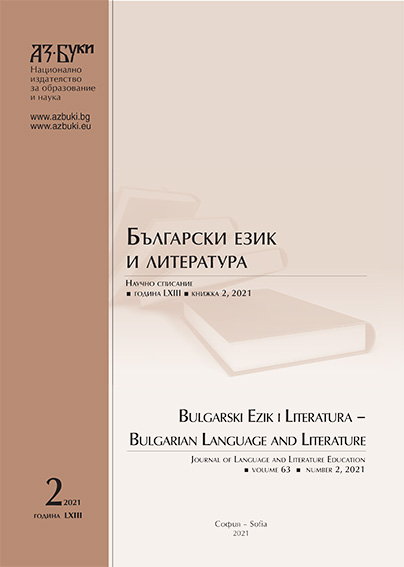
The article presents a lesson, related to the acquisition and application of knowledge in Bulgarian language, Information technology and Economics. The aim is to learn students how to use these skills in practice for their professional realization in life.
More...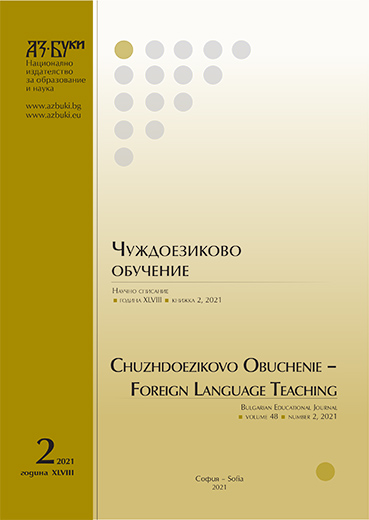
The present study aims to test students’ motivation in foreign language classes. The survey also aims to gather information which area of learning English or Spanish contemporary students consider most difficult to acquire – reading, writing, listening, speaking, grammar, vocabulary, and why they have decided to learn the relevant foreign language.
More...
Media language is a prototype of the public consent for the media to be defined through compromise as a fourth position in the paradigm of power as a philosophical category, whose explications before the media are legislative, executive, judicial. The linguistic norm and the cognitive-rhetorical characteristic of the media discourse are the prototype of the metaphor of the "fourth power". The formation of the information-language culture and the preservation of the language norm is the high social responsibility of the media discourse. The media is a prototype of public consciousness, a “picture” of national identity – a unit of political and socio-economic information and cultural “taste” (a sample of art and its list).
More...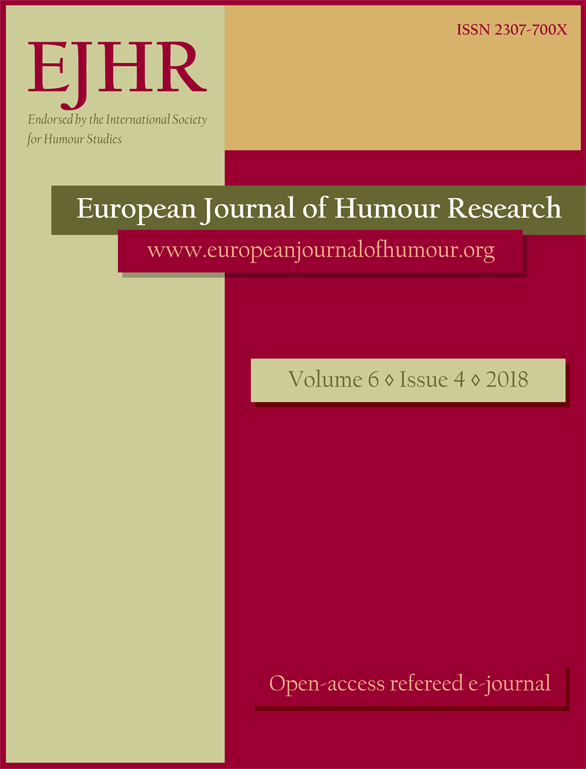
Various studies exist on the social functions of humour and such studies have been carried outin diverse fields that range from the humanities to the sciences. In linguistics, specifically,research shows that humour has been studied from the perspectives of syntax, pragmatics, andsemantics; moreover, there is a dearth of studies on the creation of humour throughphonological processes. Therefore, this study aims to investigate humour and how it isachieved using phonological processes. The study engages mainly qualitative methods ofanalysis. Five comedy skits were purposively selected from Folarin Falana’s (Falz the BahdGuy) eleven collections. These were chosen on the basis of their internet popularity amongNigerians; this popularity was determined on the basis of the rates of downloading the skits.McGraw & Warren’s (2010) Benign Violation Theory was used to account for thephonological violations in the comedies. The various phonological processes that wereviolated include liaison, deletion, insertion, monophthongisation, coalescence, and vowelstrengthening. It is argued that the phonological distortions are deliberately made to achievehumour in these Nigerian comedies, especially when the high educational level of the artist isconsidered. Also, there anti-Anglicism and pro-Nigerianism in the data as the artist identifieshimself with Nigeria(ns) and creates a niche for himself in the entertainment industry usingthe phonological peculiarities among Nigerians’ language use, especially the Yoruba tribe. Healso creates different personalities to project different messages which are not only peculiar toNigeria but to the world, using these personalities to portray people’s feelings and views ofthe world and how these influence their attitudes.
More...
The paper deals with the origin and development of classical grammar school: Basra, Kufa and Baghdad. The cause of their creation is mistakes in speaking and reading of the Qur'anic text. All examples of these errors and biographies of the grammarians, with some minor modifications, are taken from the introduction to the work Dirasatun tatbiqijje fin-nahw ve-Sarf. The author of the work is Professor Abdu l-Semi 'Shaban, my professor at the undergraduate and postgraduate studies in Cairo. The paper presents translation of the introduction to this work. In this paper, we meet a number of clients who have studied Arabic grammar, so hence this science is often referred to as the science of clients or residents. The work is full of controversies between al-Kisa'i and al-Jezidi and between al-Muberrid and Sa'leba, and one of the sharpest controversies was conducted between Sibevejh and al-Kisa'i in the presence of the Caliph, and other officials in which al-Kisa'i was declared the winner. It was a political judgment. Kufa was closer to Baghdad, geographically and politically. The Grammarians of Kufa were closer to the court than the grammarians of Basra.
More...
This article sets out to outline the evolution of the Translation Studies in Bulgaria from 1970 till the beginning of the 21st century. It aims to provide a brief overview of some pioneering articles, the studies that marked the development of translation theory from 1970 to 1990 and some works from the post-totalitarian period. In 1976 the Publishing House Narodna kultura lays the foundation stone for Translation studies, creating the collection “The Art of Translation”. From the 1970s, the Theory and Practice of Translation are included in the courses offered by the Faculty of Western Languages of Sofia University. If the key word defining the translating activity in Bulgaria from the Second World War to the 1990s is confinement, the one that qualifies its state at the beginning of the 21st century is openness. Very controlled in the years 1970 – 1990, the translatological reflection frees itself from the ideological pressure at the turn of the 20st and 21st centuries.
More...
When understanding the complex social processes in the Principality of Bulgaria at the end of the 19th century, the medieval legal literary-linguistic heritage was realized as a foundation for the creation of an academic style in legal science after the Bulgarian Revival. The article aims to analyze how this occurs in the personal practice of P. Odzhakov, in particular in his selective excerpts from Old Bulgarian laws (1892), how the Bulgarian legal terminology develops from the Middle to the Modern Ages. It focusses on translation decisions of the jurist in comparison with the Greek originals, the Old Bulgarian representatives, as well as other modern languages.
More...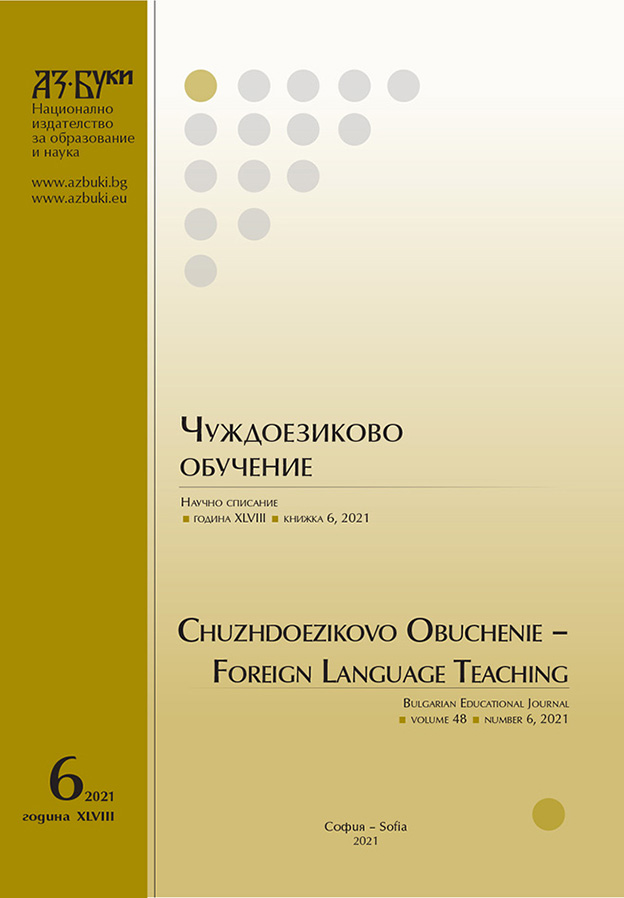
The article examines the evolvement of the Bulgarian word kurort in historical terms. The first part discusses the practices of using the healing power of nature from ancient times to the present day. Special attention is paid to balneology in Bulgaria as evidenced by numerous settlements named Banya, lit. ‘bath’. Next, an analysis is made of the word kurort and its dissimilarity from the corresponding English and French terms. The emergence of the concept of Kurort in the German language is associated with the general development of medicine from the XIV century onwards, when the medical terminology changed.
More...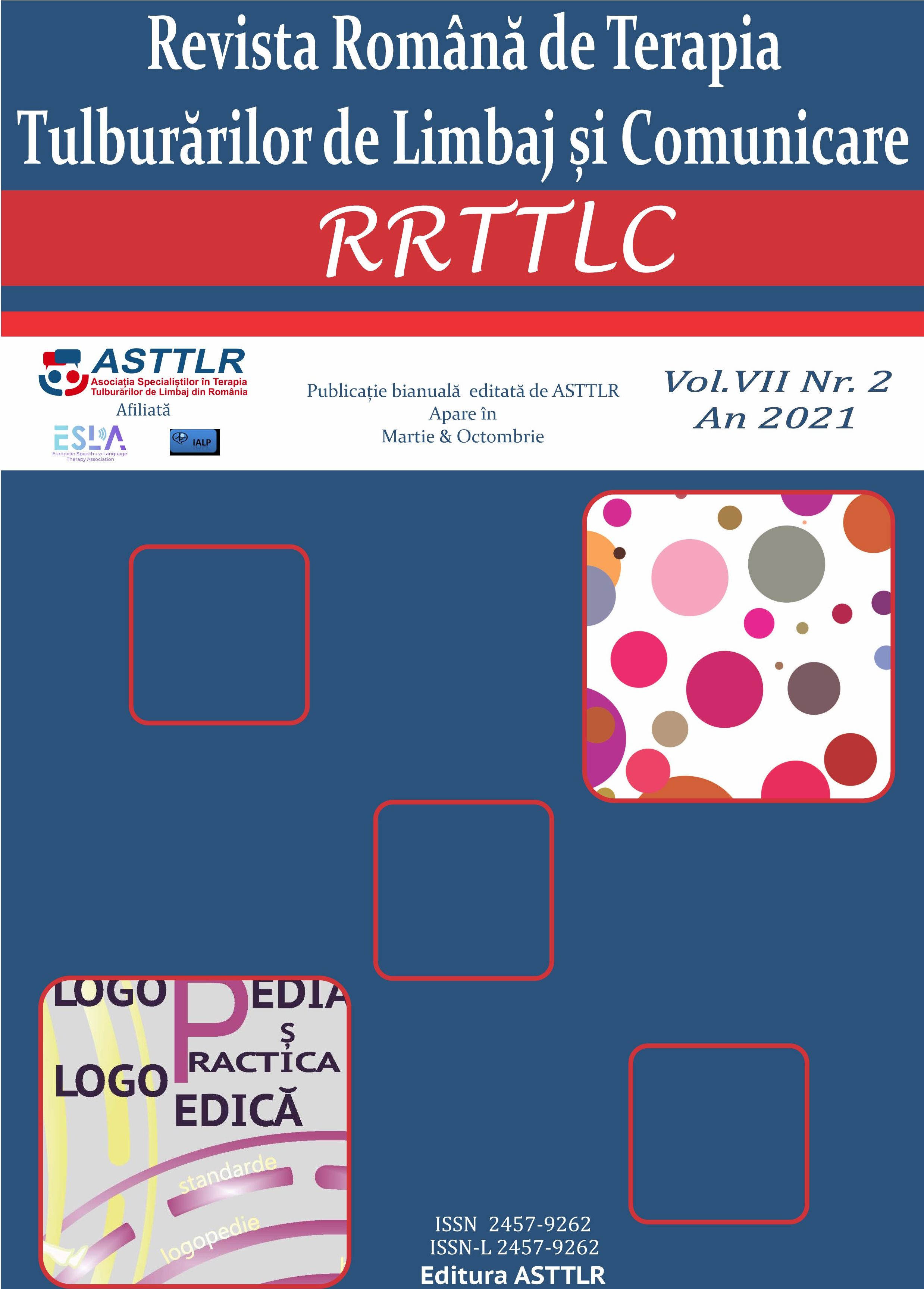
The purpose of this article is to highlight the importance of using three functional measures: Auditory Developmental Scale (0-6 years), Caregiver Intake Interview, and Infant-Directed Speech Checklist in SLT. In the first part of this article, the authors discuss the purpose and advantages of using these instruments in SLT practice. In the last part of this article, the Caregiver Intake Interview and the Infant-Directed Speech Checklist are presented in two languages, English and Romanian.
More...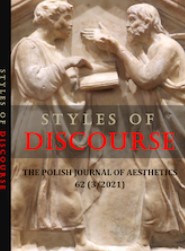
This article introduces cross-cultural communication and linguistic cross-fertilization by exploring the fascinating and multifaceted Yiddish language and its survival in Israeli, the result of the fin-de-siècle Hebrew revival. Yiddish is a 1,000-year-old Germanic language with Latin, Hebrew, and Aramaic substrates, with most dialects having been influenced by Slavonic languages. Yiddish is characterized by a unique style that embeds psycho-ostensive expressions throughout its discourse.
More...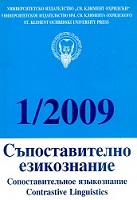
A new approach to the analysis of eighteenth century Bulgarian texts is proposed. They are classified into four types - a strongly classicized, an intermediate, a moderately classicized and a demotic one - which differ in the degree and the character of their classicization on the phonetic, morphological and syntactic level. With all the four written-language styles the vocabulary combines a good deal of the centuries-long tradition (abstract words, names for religious concepts, natural-science and philosophical terms) with innovative lexical items, as it is in present-day Bulgarian, and the spelling is traditional. The Greek moderate Katharevoussa (as a means of making a linguistically modern text look classical-like) is the typological model for the moderately classicized eighteenth century Bulgarian written style, as the Greek Dhimotiki is for the demotic one. Two varieties of the classical written language provide linguistic samples for the eighteenth century Bulgarian scribe: the South Slavic (Serbo-Bulgarian) bezjusov one (without letters for the Old Bulgarian nasal vowels) and the East Slavic Church Slavonic one. The language of Paisij Hilendarski is of the intermediate strongly-to-moderately classicized type with a mixed traditional Serbo-Bulgarian and East Slavic phonetics and orthography and does not contain dialectal-vernacular phonetic features as some specialists in the history of Written Bulgarian claim.
More...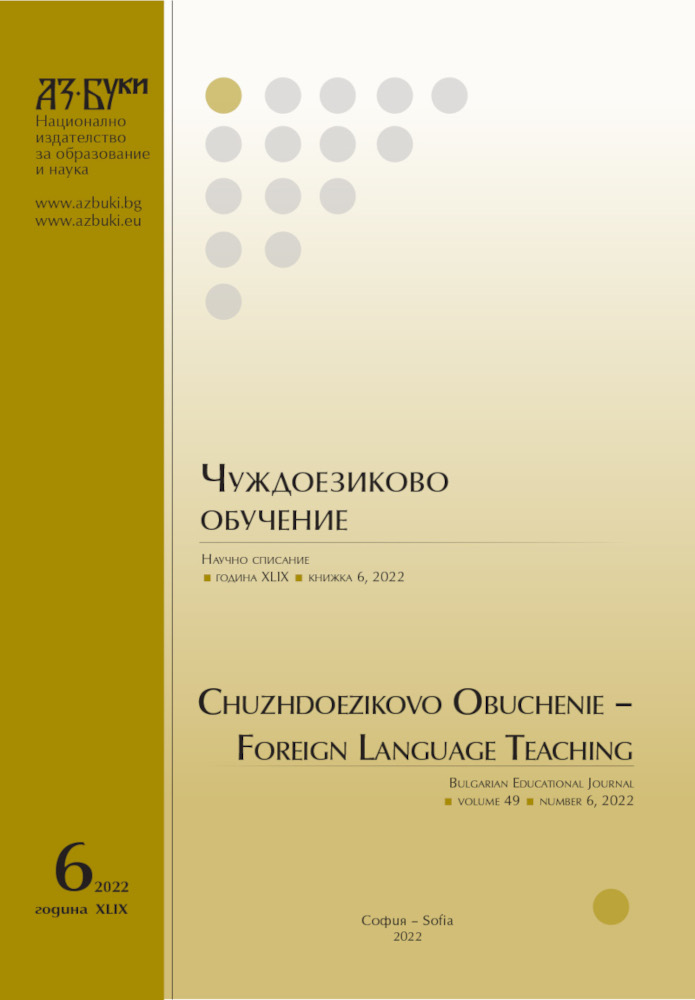
The last two years saw a dramatic increase in the use of digital classrooms due to the new pandemic realities. Internet platforms and social networks offer teachers many options for interacting with their students and colleagues. Online communication differs from face-to-face communication in many aspects and for linguadidactic purposes should be reconsidered from a sociolinguistic point of view. The aim of the study is to explore sociolinguistic aspects of teachers’ nature in online intercultural communication. The study relies on a questionnaire and interviews to collect data about students’ level of sociolinguistic awareness, their ideas about professional online interaction, and their views on sociolinguistic difficulties. The research provides a comparative analysis of the sociolinguistic competence status in Russian and European methodology. The paper introduces the list of internal and external features that influence interlocutors’ sociolinguistic behavior during intercultural communication online. The results suggest that there are a lot of digital factors that determine the communication outcome. The term “sociolinguistic credo” and its definition are presented. It is admitted that external and internal peculiarities should be taken into account in order to train future foreign language teachers effectively. There should be equality of cultures, especially on the Internet where it is easy to lose all cultures behind avatars.
More...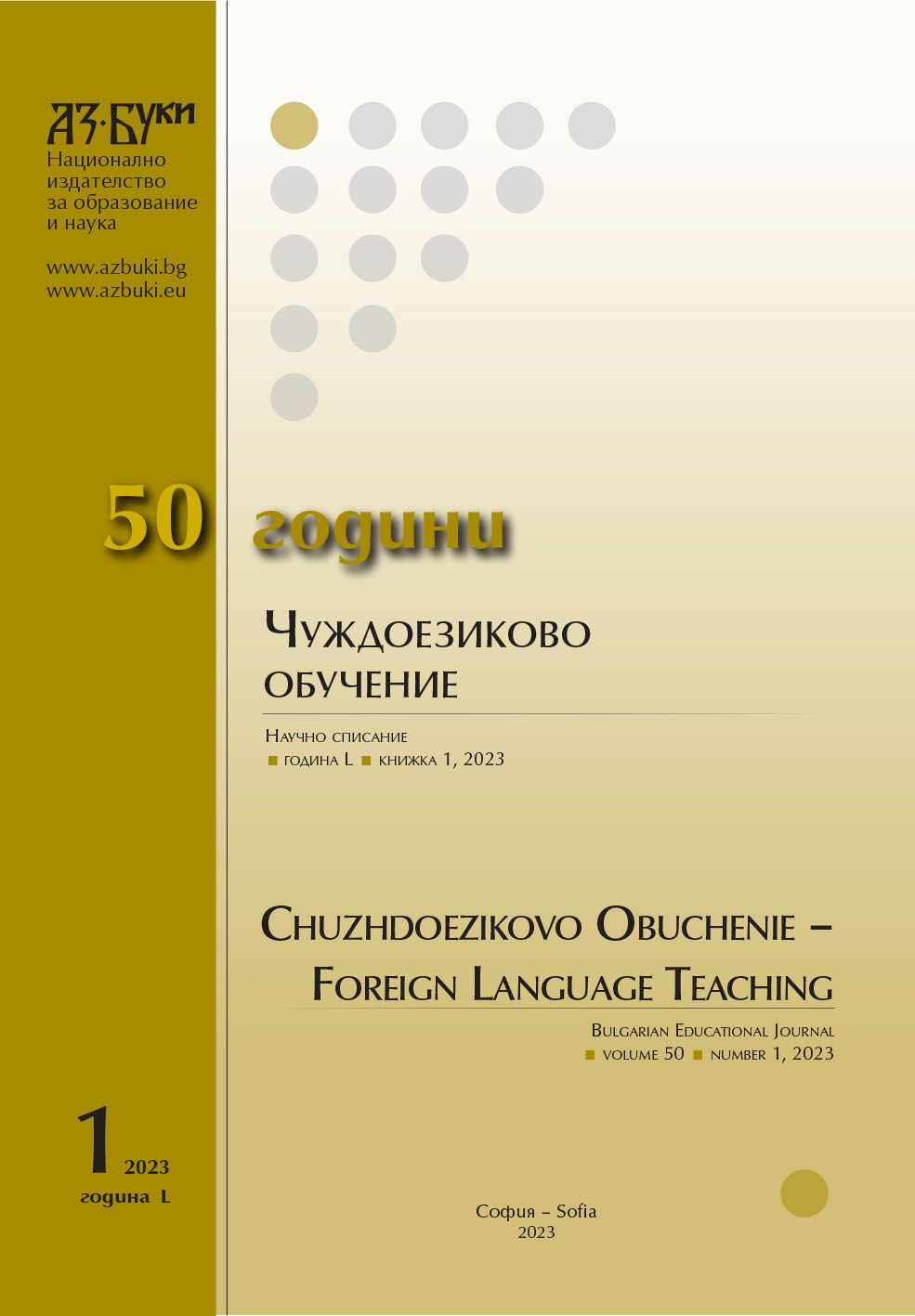
Bulgarian language through Turkish mediation. The Ottoman Turkish language contains a significant layer of Arabic and Persian vocabulary, which hasalso entered the Bulgarian language. Some of the Arabic vocabulary was inherited from Aramaic, the language of Jesus Christ, and from the Akkadian language of Babylon and Assyria, and Persian - from the language of the Zend Avesta. As a result, Bulgarian culinary terminology preserves an ancient heritage.
More...